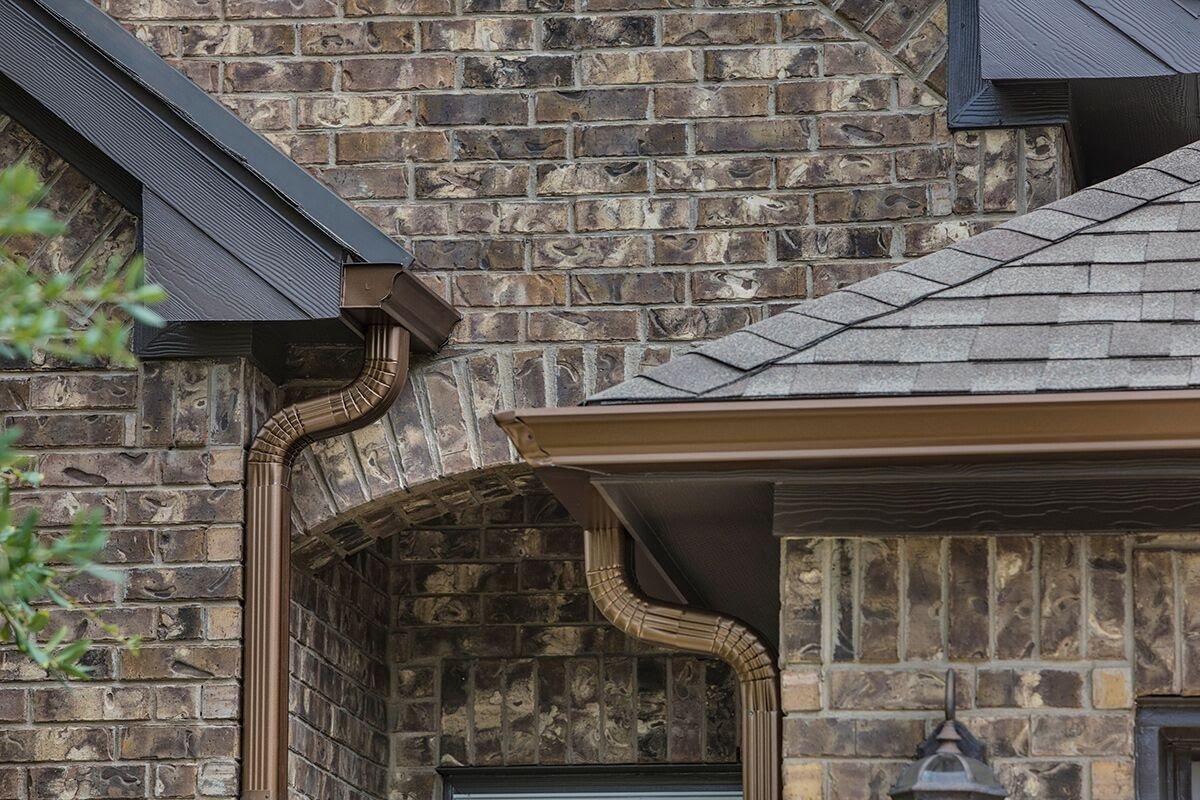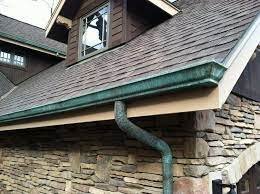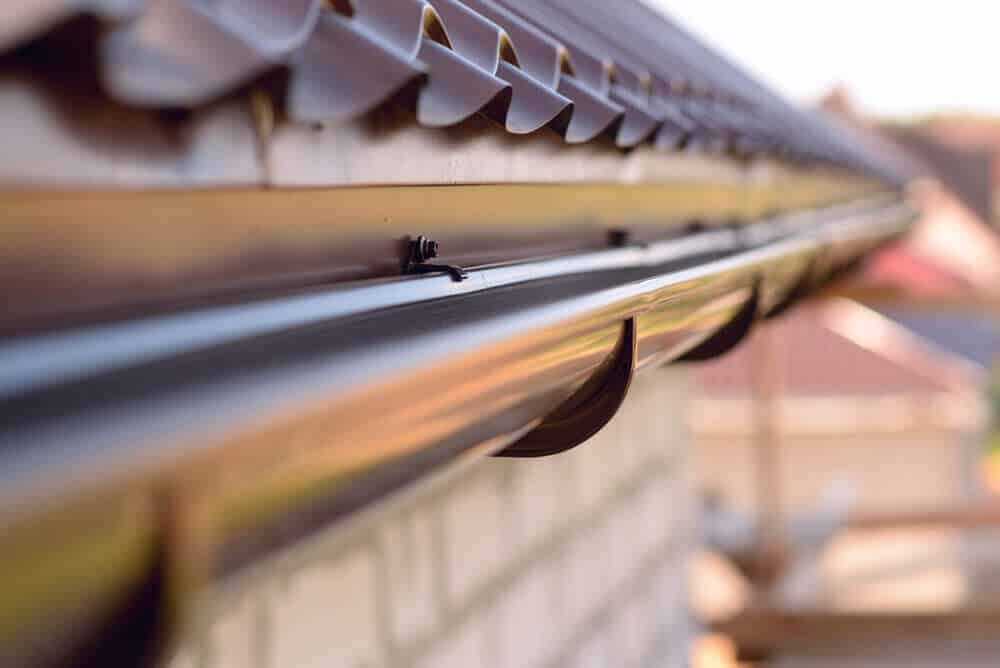Service Description
A rain gutter may be a:
- Roof integral trough along the lower edge of the roof slope which is fashioned from the roof covering and flashing
- Discrete trough of metal, or other material that is suspended beyond the roof edge and below the projected slope of the roof.
- Wall integral structure beneath the roof edge, traditionally constructed of masonry,
fashioned as the crowning element of a wall.
A roof must be designed with a suitable fall to allow the rainwater to discharge. The water drains into a gutter that is fed into a downpipe. A flat roof should have a watertight surface with a minimum finished fall of 1 in 80. They can drain internally or to an eaves gutter, which has a minimum 1 in 360 fall towards the downpipe. The pitch of a pitched roof is determined by the construction material of the covering. For slate this will be at 25%, for machine made tiles it will be 35%. Water falls towards a parapet gutter, a valley gutter or an eaves gutter. When two pitched roofs meet at an angle, they also form a pitched valley gutter: the join is sealed with valley flashing. Parapet gutters and valley gutters discharge into internal rainwater pipes or directly into external down pipes at the end of the run.
The capacity of the gutter is a significant design consideration. The area of the roof is calculated (metres) and this is multiplied by rainfall (litres/sec/metres²) which is assumed to be 0.0208. This gives a required discharge outfall capacity. (litres/sec) . Rainfall intensity, the amount of water likely to generated in a two-minute rainstorm is more important that average rainfall, the British Standards Institutenotes that an indicative storm in Essex, (annual rainfall 500mm per annum) delivers 0.022 l/s/m²- while one in Cumbria (annual rainfall 1800mm per annum) delivers 0.014 l/s/m².
Eaves gutters can be made from a variety of materials such as cast iron, lead, zinc, galvanised steel, painted steel, copper, painted aluminium, PVC (and other plastics) and occasionally from concrete, stone, and wood.
Water collected by a rain gutter is fed, usually via a downpipe (also called a leader or conductor), from the roof edge to the base of the building where it is either discharged or collected.] The down pipe can terminate in a shoe and discharge directly onto the surface, but using modern construction techniques would be connected through an inspection chamber to a drain that led to a surface water drain or soakaway. Alternatively it would connect via a gulley (u-bend) with 50mm water seal to a combined drain. Water from rain gutters may be harvested in a rain barrel or a cistern.
Rain gutters can be equipped with gutter screens, micro mesh screens, louvers or solid hoods to allow water from the roof to flow through, while reducing passage of roof debris into the gutter.
Clogged gutters can also cause water ingress into the building as the water backs up. Clogged gutters can also lead to stagnant water build up which in some climates allows mosquitoes to breed





